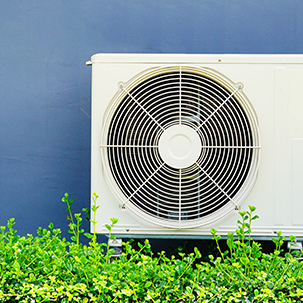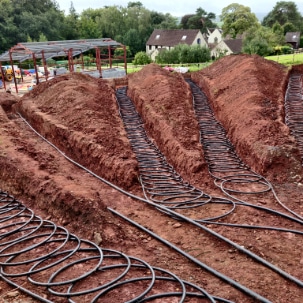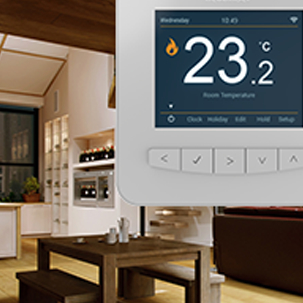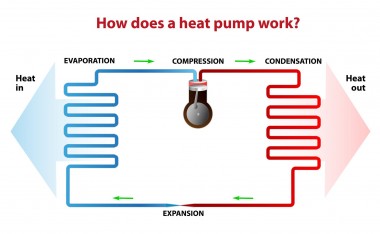
A heat pump works by extracting energy from natural sources. This low grade energy is transferred across a heat exchanger to a gaseous refridgerant. This now warm (ish) gas then passes through an electrically driven compressor where it is compressed. Compression of gas generates heat, how hard the compressor works (and so how much electricity is required) dictates the temperature the gas leaves the compressor. This hot gas then passes across a second heat exchanger, on the opposite side of which is the heating medium (fluid in your heating system). The high grade heat produced is suitable for providing heating and hot water. This is explained further by the diagram to the right.
Heat pumps have a variable efficiency. A well installed heat pump system leaves the compressor with little to do – the temperature back from the ground or air is high, and the heating system is well designed so the flow temperatures required are low. This means very little electricity is needed. The measurement of this efficiency is the ratio of how much electricity they use against than extracting heat from natural (Regularly defined as COP).
By correctly sizing ground loops, or positioning an air source heat pump in an area exposed to sun that is not a heat sink you can optimise the energy input. However designing the emitter circuit is just as critical. Underfloor heating should be designed to run at a maximum of 45°C flow temperatures (this allows for transfer losses through the floor build-up, furnishings, rugs, sofas etc) and radiator circuits designed around a 50°C flow temperature.
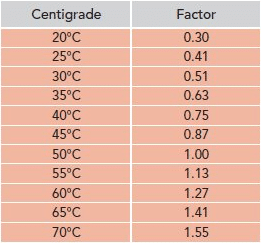
With radiators, the standard output requires a 70°C flow temperature. This implies a 50°C difference between the heating medium and the room temperature (see table to the right). With a heat pump circuit running at no more than 50°C the output from the radiators versus their rating will drop by a half with a 30°C difference between room temperature and heating medium. This means they need to be twice oversized, when comparing their rated output to the heat loss of the intended room.
If you wish to retrofit a heat pump, then clearly what you need to check is that your existing radiators are sized correctly. The vast majority of radiators heated using a fossil fuel boiler in houses older than 5 or 6 years old are sized using a formula called the Mears Calculator. This formula essentially builds in a margin so that your boiler (working on its conventional setup of warming the house up for a couple of hours in the morning and evening) can bring the rooms up to temperature quickly. This however means that the radiators are often 90-100% oversized versus the heat loss in the room. This may actually mean that a lot of the radiators in your home are sized correctly for a heat pump and may not need any upsizing for the heat pump to work. Other companies may explain that a complete re-vamp of your radiator system is required, however in our experience it is normal that only the rooms that currently feel cold will need increasing the size of current radiators.



